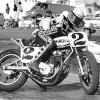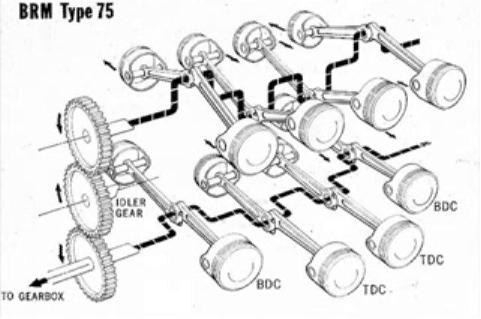Keith Duckworth (designer of the DFV) considered that the optimum size of a four stroke cylinder was 375cc. Which for a 3 litre engine means 8 cylinders. He was proved right over many years and many victories.
My understanding of this rule of thumb is that it is about the ratio of area (piston top, exposed cylinder, valve and cylinder head) to volume of the stroke. Combustion heat loss is closely related to area, power is linked to piston area, and the first of those areas changes as the piston descends.
For a four stroke car engine with racing bore/stroke ratios, compression ratio etc, the rule of thumb suggests an optimum cylinder size of about 350cc. And it worked for three and four cylinder road cars up to the 1990s -- 1000cc/3 cyl and 1300cc/4 cyl were successful combinations. For a four stroke marine diesel, the optimum cylinder size is much bigger, and for a two stroke bike engine, it is much smaller.
I thought Harry Ricardo came up with the idea?
---
Benzole and Benzene: my vague understanding.
Benzene is a hydrocarbon compound, readily distilled from crude oil. It was part of the rocket fuel or dope mix used by the 1930s Silver Arrows, speed record cars etc. Almost everything in the rocket fuel mix is injurious to health and use of Benzene is now restricted.
Benzole is a fuel made by distillation of coal and it contains Benzene as a component. Benzole was added to conventional petrol and marketed by the company National Benzole (later National). National Benzole were involved in motor sport and neat Benzole was offered as an anti-knock additive -- essential for enthusiasts running a tuned car on low octane pool petrol in the 1940s and early 1950s.
---
Avgas.
In the 1950s, GP and other racing cars typically raced on a dope mix. This was awkward for the fuel suppliers who paid for a lot of racing but could not claim that races were won on their pump petrol. Consequently there was a move for GP cars to race on pump petrol -- until somebody pointed out that pump petrol was different everywhere, assuming that you could find any. So for a brief period, GP cars raced on Avgas, switching over to pump petrol when it became more standardised and more available. Which worked fine until people determined how to make fuel that looked like pump petrol...



























